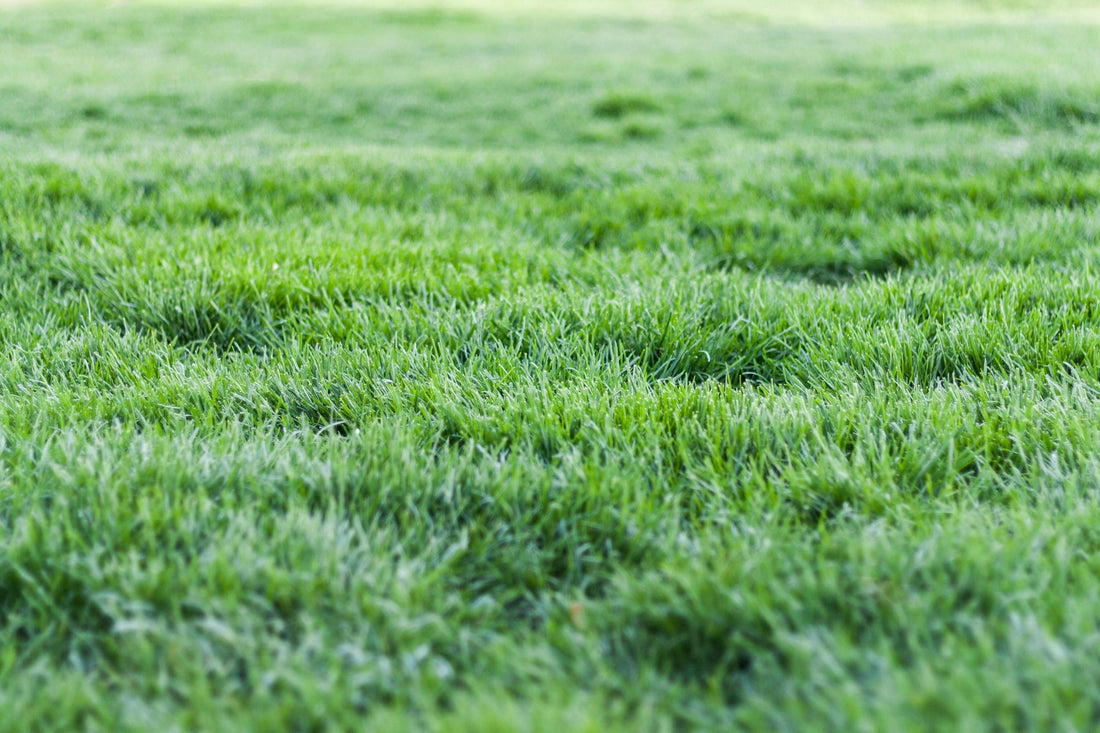As lawn care experts, we know that understanding the best time to fertilize your St. Augustine grass is crucial for maintaining a lush, green lawn.
If you're wondering when to fertilize St Augustine grass, you've come to the right place. From our experience, properly timed fertilization can make all the difference.
In this article, we'll dive deeper into the specifics of the optimal fertilization schedule, including seasonal guidelines and maintenance tips to keep your yard looking its best all year round.
So, if you're ready to transform your lawn into the envy of the neighborhood, continue reading to learn the secrets to successful St. Augustine grass care.
What this article covers:
- What Is St. Augustine Grass?
- When to Fertilize St Augustine Grass
- Yearly Maintenance Schedule
- Advantages and Disadvantages of St Augustine Grass
- Additional Maintenance Tips
What Is St. Augustine Grass?
St. Augustine grass is a popular warm-season turfgrass known for its vibrant color and dense growth. It's particularly well-suited for regions with mild winters and hot summers.
This grass type thrives in well-drained soils and requires moderate to high levels of fertility and care.
If you're looking for the best lawn fertilizer for St. Augustine Grass, look no further than the Almighty 20-0-10 Lawn Fertilizer.
This award-winning fertilizer is high in nitrogen but slow-release, perfect for waking up lawns and providing continuous growth.
Included in this fertilizer is XCU® 40% slow-release fertilizer which is the best nitrogen fertilizer for lawns that slowly feeds without creating excessive growth and enhancing that green. We highly recommend Almighty for strengthening your turf.
When to Fertilize St Augustine Grass
When to fertilize St. Augustine grass depends on the climate and growing season. Our findings show that the best times to fertilize are during its active growth periods, typically from spring through fall.
In early spring, apply a balanced fertilizer to kickstart growth as temperatures rise.
Throughout the summer, use a nitrogen-rich fertilizer to support robust growth and maintain color.
As fall approaches, switch to a slow-release fertilizer to help the grass store energy for the winter.
Avoid fertilizing after mid-September to prevent growth that can be damaged by cooler temperatures. Unless you are located in a southern area where it will be growing year round. Fertilizing during these periods ensures your St. Augustine grass remains lush and vibrant.
Yearly Maintenance Schedule
January Through April
Early in the year, focus on preparing your lawn for the growing season. When to fertilize lawn in spring is a common question, and for St. Augustine grass, it's best to start as temperatures begin to rise.
As temperatures warm up, begin by applying a pre-emergent herbicide to control weeds. This step is essential to prevent weeds from germinating and competing with your grass for nutrients and water.
In late spring, start your fertilization schedule with a balanced fertilizer to kickstart growth. This will provide the necessary nutrients to support healthy and robust growth as your lawn enters its active growing season.
From our experience, following this regimen ensures that your St. Augustine grass is well-prepared for the months ahead, promoting a lush and green lawn.

May Through August
This period is crucial for maintaining the lush appearance of your lawn. In early summer, fertilize with a nitrogen-rich fertilizer to support robust growth. This provides the necessary nutrients for the grass to thrive during the peak growing season.
By mid-summer, apply another round of balanced fertilizer to maintain health and color, ensuring your lawn remains vibrant and resilient. In late summer, consider a third application if your lawn shows signs of nutrient deficiency.
This helps to address any lingering nutrient gaps and prepares your lawn for the cooler months ahead.
From our experience, following this fertilization schedule ensures your lawn remains lush and green throughout the summer months.
September Through December
As the growing season winds down, your fertilization strategy should shift towards preparing the grass for cooler temperatures. In early fall, apply a slow-release fertilizer to help the grass store energy.
This step is crucial as it ensures that your St. Augustine grass has enough nutrients to sustain it through the colder months.
During late fall, avoid fertilizing too late because this can encourage growth that's vulnerable to cold damage.
By ceasing fertilization in mid to late September, you allow the grass to harden off and become more resilient to the upcoming winter.
This approach helps maintain the health and appearance of your lawn throughout the dormant season.
Advantages and Disadvantages of St Augustine Grass
Let's look at some advantages and disadvantages of St. Augustine Grass:
Advantages:
- Shade Tolerance: St. Augustine grass thrives even in shaded areas, making it an excellent choice for lawns with plenty of trees or structures that block sunlight. Its ability to perform well in low light conditions is one of its standout features, allowing for a lush lawn where other grass types might struggle.
- Lush Appearance: Known for its rich, green color, St. Augustine grass significantly enhances curb appeal. Its dense growth habit creates a thick carpet-like appearance that is both visually appealing and soft underfoot, providing a beautiful and functional lawn surface.
- Heat Resistance: Ideal for warm climates, St. Augustine grass handles heat exceptionally well. It maintains its vibrant color and growth even during the hottest months, making it perfect for regions with high summer temperatures. Its resilience to heat helps ensure your lawn remains healthy and attractive throughout the year.

Disadvantages:
- Thatch Buildup: St. Augustine grass requires regular dethatching due to the accumulation of organic debris, such as dead grass and roots, which can form a dense layer known as thatch. This layer can block water, air, and nutrients from reaching the soil, making dethatching an essential maintenance task to ensure healthy growth.
- Water Needs: St. Augustine grass needs consistent watering, especially in dry periods. This grass type has a relatively high water requirement, which means it needs regular irrigation to maintain its lush, green appearance. Inadequate watering can lead to stress and decline in the grass's health.
- Vulnerability to Cold: Compared to other grass types, St. Augustine grass is less tolerant of cold temperatures. It can suffer damage or die back during harsh winters, making it less suitable for regions with severe cold. Proper winterization techniques and careful management are necessary to protect the grass during colder months.
Additional Maintenance Tips
- Mowing: Keep your lawn at the recommended height of 2.5 to 4 inches to promote healthy growth. Mowing at this height helps St. Augustine grass retain moisture and develop a strong root system. Regular mowing ensures that your lawn remains dense and lush, reducing the risk of weed invasion.
- Watering: Water deeply and infrequently to encourage deep root growth. Deep watering promotes the development of a robust root system, making the grass more drought-resistant and healthier overall. It is essential to water in the early morning to minimize evaporation and fungal growth.
- Weeding: Knowing when to weed and feed your lawn is best determined by the specific weed issues in your yard. Use appropriate herbicides and fertilizers as needed. Applying a pre-emergent herbicide in early spring can prevent weed seeds from germinating, while a post-emergent herbicide can tackle existing weeds. Combine these with a suitable fertilizer to maintain the lawn's health and vigor.
- Temperature Considerations: Be mindful of what temperature is too cold to fertilize lawn. Avoid fertilizing if temperatures drop below 55°F to prevent damage. Fertilizing during cold weather can cause the grass to grow when it should be dormant, making it susceptible to frost damage. Instead, focus on fertilizing during the growing season to support healthy development.
Conclusion
Achieving a lush, green lawn takes dedication and the right approach. From our experience at Lawn Synergy, maintaining a beautiful St. Augustine lawn is all about timing and care.
By following our comprehensive guidelines on how often do you fertilize grass, you can ensure your lawn remains healthy and vibrant throughout the year.
Whether it's understanding the best times to fertilize, the importance of regular watering, or the need for proper mowing, our tips cover all aspects of lawn care.
Trust Lawn Synergy to help you create and maintain the perfect lawn. Visit our website for more expert advice and products tailored to your lawn care needs. Happy lawn care!
If you want to learn more, why not check out these articles below:
- When to Seed and Fertilize Lawn
- When to Fertilize Centipede Grass
- Do I Need to Fertilize My Lawn?
- Is Lawn Fertilizer Toxic?
- Is It Ok to Fertilize Lawn in Hot Weather
- Can You Fertilize Dormant Grass
- Does Grass Fertilizer Kill Weeds
- Germination of Grass Seed
- How Does Grass Grow?
- How Much Fertilizer for Lawn?
- Will Fertilizer Kill New Grass?
- How Long Does Lawn Fertilizer Take to Work?
- Weed and Feed or Grass Seed First?
- How to Spread Lawn Fertilizer
- How to Fertilize Lawn in Spring


